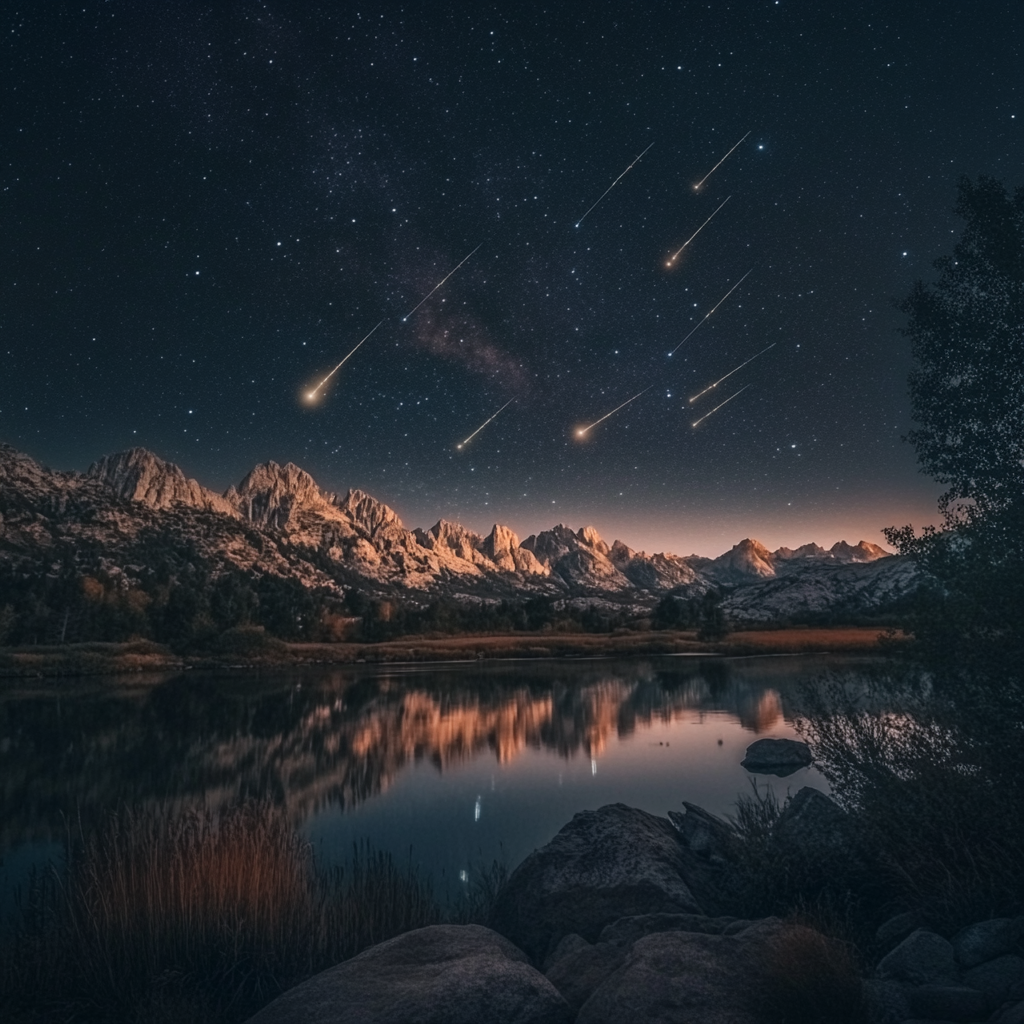
“Orionid Meteor Shower: Viewing Halley’s Comet Debris”
The Orionid Meteor Shower 2024: A Cosmic Display of Halley's Comet
When it comes to celestial spectacles, brace yourselves for the Orionid meteor shower—the event that outshines those fancier fireworks shows humans craft with skill and scientific know-how. This annual extravaganza serves as a stunning reminder that the universe gets called to the stage with its dazzling performances, showcasing a twinkling tapestry woven from the remnants of Halley's Comet. Unlike that rare comet you've dreamed of spotting once in a lifetime or the elusive Northern Lights that seem to tease you into believing they’ll just pop up whenever—the Orionids give you a reliable cosmic show without the complication of luck and chance.
Now, mark your calendars because the Orionids stretch their magnificent tails from October 2 to November 7, with the peak dazzling display expected around October 21. Imagine dimming your lights and stepping outside, potentially lost in the fabric of the universe weaving intricate stories in real-time.
The Perfect Window to Watch the Orionids
So, let’s get practical for a moment. If your goal is to snag a glimpse of this meteor shower, you’ll want to pay close attention to the timing. The meteor shower's peak brilliance is set between midnight and dawn on October 21. As you gaze skyward, look for the radiant point—the constellation Orion, which will be high in the sky around 2 a.m. local time. Now, while you might fancy yourself a stellar observer from the Southern Hemisphere, it’s worth noting the Northern Hemisphere viewers often get the best views. If you find yourself near the equator, don’t count yourself out entirely; you might just get a slice of this cosmic pie as well.
Here comes the kicker—the moon! In 2024, we'll have a waning gibbous moon showing off at around 83% illumination, which may spoil some of the fun by drowning out the weaker meteors with its brightness. No worries—if you can find some trees or buildings that can block that light, you’ll be much better off!
Strategies for Meteor Worship
Okay, you’re gearing up for the cosmic wonder, but it's not simply about rolling outside and staring up as if you were waiting for pizza delivery. In fact, it can be quite the opposite. If you truly want to soak in all that cosmic glory, take heed of these tips to optimize your viewing experience:
First off, ditch the city! Get yourself a location far away from those disruptive streetlights. Just remember, watching the Perseids or the Leonids from your backyard in suburbia won't cut it. You need darkness—like, “I’m scared of the dark” type of darkness. Trust me when I say that being out there in unlit spaces can unveil up to ten times more meteors than if you were surrounded by that bewildering array of city lights.
Next, optimize your timing by setting up your stargazing session during those magical witching hours between midnight and dawn! At around 2 a.m., when Earth is cruising into the path of the meteor shower, you’ll want to look up to perhaps receive the universe’s most dazzling welcome.
Now, let's talk about your eyes. It might feel strange, but helping your rods and cones adjust entails just sitting under the night sky for about 20 minutes, letting them drink in the dusky atmosphere until they start to appreciate the sweet glitter of the meteors.
And here's a handy tip—while it’s tempting to stare straight at Orion, you want to instead cast your gaze about 30-40 degrees away from the radiant point. This little trick will allow you to see the full glory of longer, more spectacular trails. Trust me on that one—it's all about making your eyes work smarter, not harder.
What Awaits the Stargazers?
Here’s the exciting part. If you've ever had that exhilarating moment when a shooting star blazes across the sky—get ready for more! Orionid meteors are sprinters of the night sky, streaking along at an impressive speed of about 66 kilometers per second (don’t blink, or you might miss them!). They often embrace the divine by leaving behind luminous trails that last seconds or, in lucky moments, even a whole minute.
But wait, there's more! Among the meteors, some will develop into full-blown fireballs, dazzling the observers below until they almost become jealous of the stars themselves. If you manage to catch one, don't forget to report it to the American Meteor Society. You're not just a passive viewer; you're part of a grand cosmic narrative!
Now, let’s talk numbers. This year, the Orionids might provide a less-than-thrilling rate of about 10 to 20 meteors per hour because, let's be honest, the moon is a bit of a party crasher. Under ideal conditions, when the visibility is just right (and you have your cosmic game face ready), you could observe up to 20 meteors per hour.
Unraveling the Mystery of the Orionids
Why should we care about the Orionids anyway? Well, here's where it gets poetic. The Orionids are our celestial connection to Halley's Comet, one of the universe's most famous acquaintances. Each time Earth passes through its debris trail—tiny space-borne remnants left in the comet's wake—we are reminded of the fragility and beauty of cosmic existence. Those small particles burning up in our atmosphere are essentially memories of Halley’s journey around the Sun, transformed into shimmering shooting stars that bridge the gap between Earthlings and the cosmos.
So, Are You Ready?
The Orionid meteor shower is a golden opportunity to catch a glimpse of something truly magical. This cosmic celebration allows you to connect with the universe and feel that beautiful thrill of awe as bits of Halley's Comet become a part of your night sky. You’ll want to check on the weather to make sure clouds don’t become your main audience. Can't find the radiant point? No worries—grab some smartphone apps like Star Walk 2 or Sky Tonight and let them guide your cosmic adventure.
And please, folks, don’t hog the show for yourself! Snap some pictures, tweet your stargazing wisdom, and share those experiences with your friends. After all, every meteor shower is best enjoyed when shared.
Want to stay up to date with the latest news on celestial events and more? Subscribe to our Telegram channel: @channel_neirotoken
Happy stargazing!

